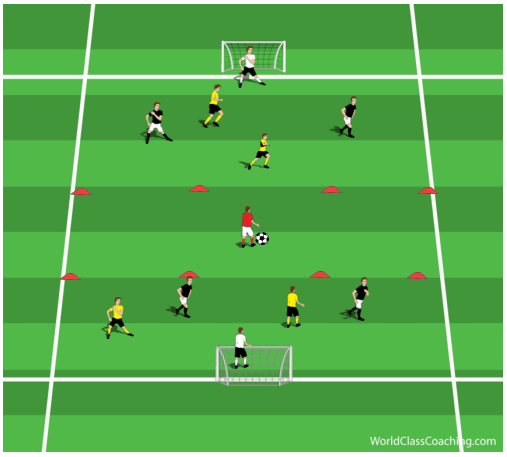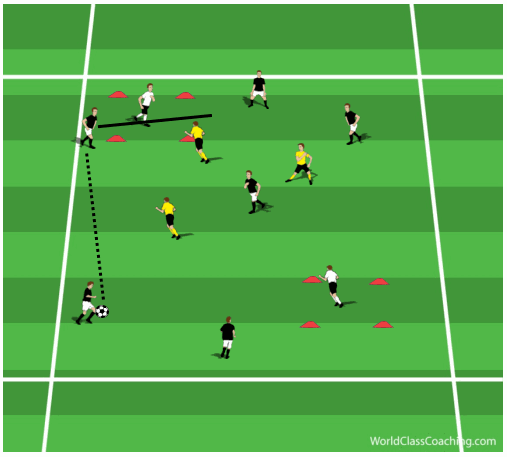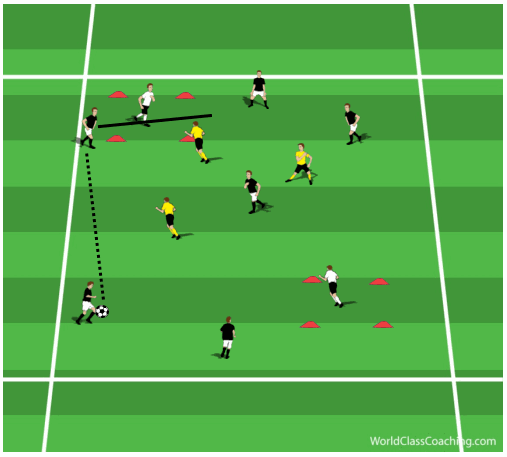- You are here:
- Home »
- Goalkeeping
Tag Archives for " Goalkeeping "

Why is David De Gea so Good?
By Josh Jones-Keen –
David De Gea has just won Man United’s player of the year for the 3rd time in a row. This is a great achievement and one that might not be beaten for some time. Some will say this is indicative of how poor Man Utd are currently however let’s put this in perspective, whilst far from their recent best they are still chasing a champions league spot and have the chance to win the FA Cup for the first time in over 10 years. A lot of what has been good about Man Utd this season has come from the back so let’s look at what makes De Gea so good and how can try to emulate him.
Communication
When De Gea first started playing for United he looked a bit lost and out of sorts as did his back line even though it was one made up of great experience. Now whilst the defenders are not anywhere nearly as good as previous incumbents De Gea has got them listening to him and they are ready to be commanded. This drill will help start to get the Keeper talking. Effective communicating can add so much to a team.
Make sure when communicating orders are brief and to the point, direct and have clear ownership. For example how many times do you hear players ‘Back if you need/want’, I tell me Keepers to be positive and if they want the ball to demand it not suggest.
These instructions cover every drill a Keeper does including playing time come match day. Here are some to use and some to avoid:
- Keeper – When call this the Keeper is staking a claim to come and get that ball. Defenders know to get out the way and attackers know what’s coming. A keeper should be saying this when comfortable to let a shot come through to them and especially when claiming a cross.
- Mark (Avoid) also ‘Mark Up’, get your Keeper in to the habit of telling defenders who to mark ‘Jill number 10’
- 18yrds – Use this instead of the traditional ‘Step Up’ or ‘Get Out’ here players know exactly where to go
- Away – Tells players to just clear the ball. It’s not the best but equivalent of ‘if in doubt clear out’
Dealing with Crosses
Again when first coming to England De Gea had looked like he almost had never caught a crossed ball in his life, now he plucks them out of the air with ease.
Coaching Points
- Receiving high balls in the W formation
- Positioning, are they in a good place to get under the ball
- Footwork, are they moving around defenders to claim the ball
- Communication, ‘Away’ or ‘Keepers’
- Body Shape, is it correct when receiving the ball and is it ready to start a counter attack
Set Up
- 50Yrds by 35yrds
- 6 on 6 but 2v2 in each sq, to start with each player is restricted to their squares
- Attackers must get the ball wide to score from a cross
- Goal Keepers try to intercept and start counter attack

Shot Stopping
Shot stopping is what really brings De Gea the plaudits. Time and time again he will pull off a save that adds to United’s points total. They would be a lot worse off without him. If saves were celebrated like goals DDG would be an even more busy man.
Set Up
The field is 50 yards long, split in to 3 zones. One end zone is 18 yards deep while the other end zone is 25 yards deep. The different size end zone will encourage different types of shots.
Coaching Points
- On top of saving the ball in the correct way Keepers should look for
- Good positioning – before and after the shot
- Good body shape – before and after the shot
By Josh Jones-Keen – Josh has been coaching Goalkeepers for over a decade & has both Outfield and Goalkeeper coaching awards from England and Scotland. He’s coached at a number of levels from grassroots to semipro and currently coaches non league Women’s team as well as a local academy.

Shot Stopping Game
By Josh Jones-Keen –
This is a fun but competitive drill recently seen performed by Burnley FC. The aim of this game is to keep the ball out of the net by any means possible. After all that’s what we’re paid to do.
This can be done 1 on 1 or with multiple Keepers by rotating more frequently. If 1 on 1 I would go best out of 10 (or whatever time permits). I would use this drill at the end of a tough session to add some light relief and not to take things too seriously as opposed to Small Sided games with the rest of the squad. These types of drills also help increase camaraderie between Keepers as a team.

[wpsharely id=”821″][/wpsharely]
Firstly the Keeper must jump over the hurdle and the striker will shout which cone (number them 1-4) the Keeper must touch the cone and reset back to the middle before the striker 1) Drop Volley, 2) Roll on the ground and strike 3) Dead Ball Strike all from the edge of the area.
As mentioned before the Keeper needs to keep the ball out of the net but praise good technique.
Progression
The Keeper starts the same and the striker still calls the cone however this time they are on the edge of the D, when the Keeper returns to the set position the Striker can roll the ball and must strike it before the 18 yard box.
By Josh Jones-Keen – Josh has been coaching Goalkeepers for over a decade & has both Outfield and Goalkeeper coaching awards from England and Scotland. He’s coached at a number of levels from grassroots to semipro and currently coaches non league Women’s team as well as a local academy.

Dealing with 1 v 1’s
By Josh Jones-Keen –
This is another topic and drill that was discussed at the recent FA Keepers Conference. As players get faster and the game changes dealing with 1:1’s is becoming more & more important.
40×40 yard box with two small boxes in side for the Keepers.

6v 3 with a Keeper in each box, overloaded intentionally to create chance for the Keeper to practice 1 on 1’s, swap the 3’s around. Outfield players score by running the ball through the box Keepers score a point by forcing the player out of the box or by making a save.
Progression
Keepers can now score 3 goals if they leave the box and intercept a pass or steal the ball from a player’s foot with their hands.
Progression 2
To add more realism, if the Keeper leaves the box they can now only regain the ball with their feet
If the defending team win the ball they can now try and keep the ball using the Keepers. 5 passes equals a goal.
Coaching Points
- Positioning, down the line of the ball
- Good footwork, follow the ball across as it’s played
- Body shape, showing the attacker out of the box
- Decision making, when to pounce when to delay or deny space
By Josh Jones-Keen – Josh has been coaching Goalkeepers for over a decade & has both Outfield and Goalkeeper coaching awards from England and Scotland. He’s coached at a number of levels from grassroots to semipro and currently coaches non league Women’s team as well as a local academy.
